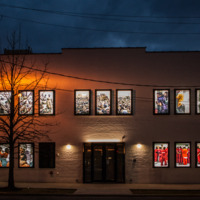
Legacy Museum
Open since April 2018, the Legacy Museum is built on the site of a former warehouse where enslaved Africans were imprisoned. The site is located between an historic slave market and the main river dock and train station where tens of thousands of enslaved people were transported through at the height of the domestic slave trade. Today it is a short walk from the National Memorial for Peace and Justice in the heart of downtown Montgomery, Alabama. The museum’s mission is to acknowledge and present the legacies of slavery, lynching, and racial segregation in the United States. The Legacy Museum is used to educate people about long-standing racial inequality in America and prompt them to search for truth and reconciliation with the aim of developing real solutions to contemporary problems. Its managing organisation, the Equal Justice Initiative, was founded in 1989 by Bryan Stevenson and was initially set up to help the poor, the incarcerated, and the condemned. In continuing this spirit of active community engagement, the museum also runs concerts and academic summits, and actively participates in human rights campaigning in Alabama.
The museum exhibition begins by showing replica constructions of slave pens, accompanied by unique audio and visual effects, attempting to allow visitors to empathise with an imprisoned slave waiting to be sold at the nearby auction block. There are also first-person accounts from enslaved people, portrayed on film by actors. Alongside these audio-visual experiences there are also more traditional exhibits that examine America’s history of racial injustice and its legacy, drawing connections across generations of Americans impacted by racial difference. These exhibits feature artefacts and archival materials. The museum also includes pieces of contemporary art, commissioned with creative partners to depict contemporary responses to the ongoing legacies of slavery and racial inequalities.
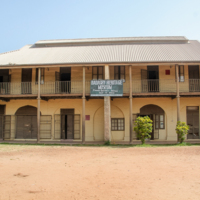
Badagry Heritage Museum
The Badagry Heritage Museum is housed in the former district officer’s office that was constructed in 1863. The museum attempts to highlight the injustice and horror of the transatlantic slave trade, whilst also exhibiting the rich histories and cultures of Africa. There is a specific focus on the heritage of pre and post-transatlantic slave trade in Badagry. The museum consists of eight galleries each dealing with particular themes relating to local heritage and the transatlantic slave trade. Guided tours are available. The museum is managed by the Nigerian Cultural Commission.Each of eight galleries are named after a part of the transatlantic slave trade. The first, the 'Introductory Gallery', focuses on the founding and early history of Badagry. The next five galleries all deal specifically with distinct phases of the slave trade, from capture, transportation, material culture, resistance, and industry. In these galleries are objects that illustrate the brutal nature of enslavement, including shackles and manacles, as well as replicas of slave ships. The seventh gallery examines the forced integration of the enslaved into the countries they were transported to, featuring videos of reconstructed slave auctions. Finally, the last gallery explores abolition movements and the persistence of slavery even after its legal end. The museum has attempted to incoporate the voices of local people within the displays, as well as depicting the significance they place on certain cultural and historical items within the museum. In addition to the historical collections, there are also some examples of contemporary art throughout, showing modern reflections on the systems of enslavement.
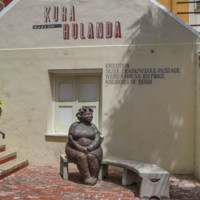
Kura Hulanda Museum
Situated on the grounds of a nineteenth-century merchant’s house and slave quarters, Kura Hulanda is an anthropological museum that focuses on the cultures of Curacao. Its displays examine a wide range of subjects from the origins of man, the African slave trade, and West African Empires, to Pre-Colombian gold, Mesopotamian relics and Antillean art. The museum is located in the central harbour of Willemstad, where Dutch merchants traded enslaved Africans and commercial goods. Kura Hulanda Museum demonstrates the influence that African and other diverse cultural heritages have had on Curaçaoan and Caribbean societies through time to the present day. It is managed by the Curaçao Tourist Board. The museum's exhibits trace Curaçaoans African roots and the legacy of the slave trade in the region with collections of art and artefacts from West Africa, illustrating the African influences on Caribbean culture. Displays chart African civilisations, the Middle Passage, life on the plantations, abolition and apprenticeship. There is a model of a slave ship, alongside examples of African bronze work, and instruments that showcase the brutal nature of enslavement. Other displays bring the narrative closer to the present day, examining the Civil Rights movement in the USA with panels relating to the Black Panthers, Martin Luther King and Malcolm X.
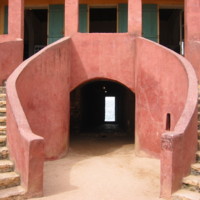
House of Slaves
The museum is located on Gorée Island, 3 km off the coast of Senegal. The structure was built in 1776 as a holding centre for Africans waiting to be exported across the Atlantic. It was converted into a museum and memorial in 1962. According to the original curator of the museum, Boubacar Joseph Ndiaye, the island played a pivotal role in the containment and transportation of slaves to America during the transatlantic slave trade. The aim of the museum and memorial is to help its visitors come to terms with the extent of the transatlantic slave trade and the effects of the trade on Africa and its people. It was designated a UNESCO world heritage site in 1978.
The content of the museum includes murals and artwork showcasing traditional African techniques, and depicting the process of enslavement. There is also a variety of objects such as chains, manacles, and cages which emphasise the brutal nature of slavery. The site itself is accessed via a ferry and the tourism industry of nearby Dakar is linked closely with the island. The key voices addressed within the museum are those of the enslaved; the museum brings visitors into close approximation with the living conditions faced by the enslaved during the transatlantic slave trade. One of the most poignant features is the 'Door of No Return' which is said to be the point where enslaved Africans were boarded onto ships ahead of the Atlantic voyage.
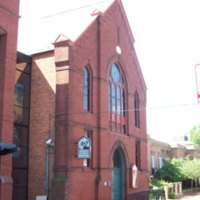
Banneker-Douglass Museum
Formerly the Mount Moriah African Methodist Episcopal Church, the site was constructed in 1875 and opened as the Banneker-Douglass Museum (BDM) in 1984. It was named after Benjamin Banneker – a free-born African American scientist and mathematician. He protested strongly against slavery, and compared the fight of the colonists to that of the enslaved people in America when writing to Thomas Jefferson in 1791. The other namesake was Frederick Douglass, a political activist, writer, and famous abolitionist who documented his experiences both escaping from and fighting against slavery. The museum is dedicated to preserving Maryland’s African American Heritage. It contains a range of both permanent and temporary exhibitions. In light of this legacy, the BDM focuses on a community-based approach to building collections and exhibitions and in providing tours, public programs, and other services. The museum's permanent exhibition is a celebration of African Americans in Maryland; providing an overview of African American history in Maryland from 1633 to the present day. Specifically the exhibition looks at Maryland’s first African American settler, Mathias De Sousa. It includes Benjamin Banneker’s almanacs, used as an anti-slavery protest to Thomas Jefferson, as well as a recording of Frederick Douglass’s speeches against racism and slavery. The museum presently partners with Anne Arundel County Public Library, offering programs and workshops at AACPL branches. It also offers guided tours of both the permanent and temporary exhibition.
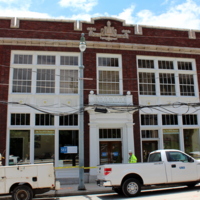
African-American Panoramic Experience Museum
The African-American Panoramic Experience (APEX) Museum aims to accurately interpret and present history from an African-American perspective in order to help all visitors understand and appreciate the contributions of African-Americans to America and the wider world. It was founded in 1978, and in 2018 curated a programme of events to celebrate its 40th anniversary.
The museum contains a range of exhibitions. These begin with a chronological display exploring the history of Africa. Another examines the experience of enslaved Africans in Georgia during the eighteenth and nineteenth centuries. Other displays bring the narrative up to date, looking at women in STEM (science, technology, engineering and mathematics), and the history of the local district Sweet Auburn, which has become a hub for African-Americans in Georgia. The museum has many artefacts including photographs, art, and traditional African material culture.
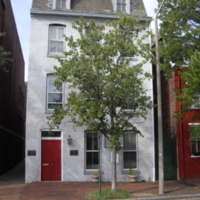
Freedom House Museum
The Freedom House Museum was once part of the headquarters for the largest domestic slave trading firm in the United States, Franklin and Armfield. Enslaved Africans were brought from the Chesapeake Bay area and forced to the slave markets in Natchez, Mississippi and New Orleans either by foot or ship. The building has a long history. In 1828, it was leased by Isaac Franklin and John Armfield and used as a "Negro Jail" or slave pen for slaves being shipped from Northern Virginia to Louisiana. During the American Civil War the museum and its surrounding sites were used firstly as a military prison for deserters, then as the L'Ouverture Hospital for black soldiers, and finally as the barrack for contraband-slaves who fled the confederate states and sought refuge with Union troops.
The building is currently owned by the Northern Virginia Urban League but the museum is managed by the office of Historic Alexandria. It operates as a reminder to the people of Alexandria of the city's role in historic slavery.
In the basement of the building there is a powerful exhibition which depicts the harsh reality of the domestic slave trade and Alexandria's role in it, through the use of first person narratives from enslaved men and women. These are complemented with a range of contextual text panels, artefacts, images and maps.
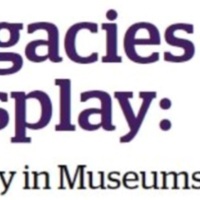
Alexandria Black History Museum
Previously called the Robert Robinson Library, the museum was opened as the Alexandria Black History Research Centre in 1983. In 1987, the Alexandria City Council placed the operation of the museum under the office of Historic Alexandria, providing a large increase in funding which allowed for the building to be completed in 1989. Further expansion followed in 1995, when the Watson Reading Room, with books, documents, and periodicals on African American culture, was added. The museum's mission is to inform and enrich the lives of Alexandria’s residents and visitors about the diversity of the African American experience in Alexandria, Virginia. The museum also operates the Alexandria African American Heritage Park, a nine-acre park, which contains a one-acre nineteenth-century African-American cemetery that was buried under a city landfill in the 1960s.
The museum has several exhibitions, displaying collections of African objects, including wood carvings from the west coast of Africa, as well as collections from African American churches, photographs, and documents. The Museum also runs events related to African cultural and heritage such as guest lectures. The museum curates a range of temporary exhibition covering a variety of topics. For example, the Sharon J Frazier and Linwood M. Smith Dollhouse collection has featured in one such exhibition with miniatures of buildings and rooms capturing the forgotten businesses and people who were important to Alexandria’s development in the last century. A particular emphasis was also placed on African American culture and important institutions such as family, church, and school.
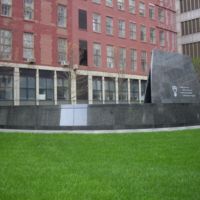
African Burial Ground National Monument
The memorial was founded after human remains were discovered underground by city workmen who were attempting to build some government offices in the 1990s. The remains belonged to enslaved Africans who were building New Amsterdam (present day New York). The African Burial Ground National Monument honours these Africans’ memory, having reburied them in a more respectful manner. It is the oldest and largest known excavated burial ground in North America for both free and enslaved Africans. A 'sacred space in Manhattan', the mission of the memorial is to acknowledge New York's involvement with slavery and the slave trade to provide a respectful and symbolic space for the reinternment of the African remains found at the site.
The facilities at the centre include a range of exhibits, a twenty-minute film and a book/gift shop. In addition, the memorial also offers on-site presentations in the visitor centre consisting of an hour long programme. The memorial is managed by the National Park Service and the U.S Department of the Interior.
The process of memorialization and the research conducted about the enslaved African skeletal remains was negotiated extensively between the General Services Administration, the African American descendant community, historians, archaeologists, and anthropologists. Civic engagement led to the ancestral remains reinternment within the original site of discovery. An external memorial, an interpretive centre, and research library were constructed to further commemorate the financial and physical contributions of enslaved Africans to colonial New York, and to honour their memory. The exhibits examine the history of the initial discovery, the research conducted to identify the remains, the documentation process and associated artefacts.
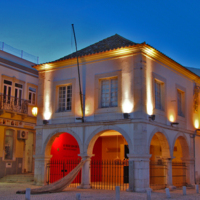
Mercado de Escravos
The Mercado de Escravos (or Slave Market Museum) is situated in the center of Lagos on the site of a fifteenth-century slave market, believed to have been the first in Europe. The museum building itself was built in the seventeenth century on the remains of the market, first as the Royal Overseer's Office, and then as the Customs House from 1755. The museum seeks to highlight the history of Portuguese involvement in the enslavement of African people.
The opening displays in the museum provide the visitor with detail about the process of enslaved Africans being transported from Africa to Portugal, and how they were then integrated into Portuguese society. There is also a panel which provides information linking this to the slave trade in Brazil, which was then a Portuguese colony.
On the second floor of the museum, there are further displays about the slave trade. The collections include books, artefacts, archival material and pieces of art (both contemporary and historic). There are tablets available so that visitors can view more of the museum's collections that are not out on display.
The Slave Market also provides visitors with information about archaeological excavations on the medieval rubbish tip of Lagos, which have led to the discovery of skeletons thought to belong to enslaved Africans.
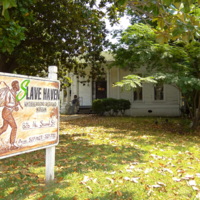
Slave Haven Underground Railroad Museum
The Slave Haven Underground Railroad Museum opened in 1997 on the Burkle Estate- an historic house in Memphis. Originally built by a German immigrant, Joseph Burkle, the building is thought to have been part of the Underground Railroad, offering safe harbour to the enslaved on their escape route through the USA to Canada. Made up of period, nineteenth-century room settings, the museum documents the history of the Underground Railroad and the possible role of the house in that network. It also features displays about the system of transatlantic slavery, slave auctions and the everyday life of slaves in the wider Memphis area using collections of artefacts and archival material, including many advertisements from slave auctions.
The site's main feature is its secret cellar and trap doors that are thought to have offered refuge to runaway slaves. Visitors are invited to step down into the cramped cellar and kneel on the brick floor to get a deeper understanding of the plight of the enslaved. The museum also conducts guided tours around the site and the local area, highlighting the broader history of slavery in the USA.
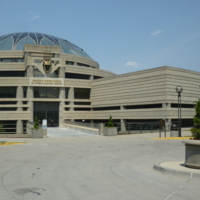
Charles H. Wright Museum of African American History
The museum was established by Dr. Charles Wright, an obstetrician and gynaecologist who envisioned an institution to preserve Black history after visiting a memorial to Danish World War II heroes in Denmark. It opened in 1965 as Detroit’s first international Afro-American museum. After expansions in 1978 and 1992, the museum was finally named the Charles H. Wright museum after its founder in 1998. It has since received monetary support from individuals, foundations, corporations, and government sources. The mission statement of the museum is to open minds and change lives through the exploration and celebration of African American history and culture.
Current exhibitions on display in the museum include a large 22,000 square-foot exhibition that examines Ancient and Early Modern African history and the experiences of the enslaved during the Middle Passage, alongside the experiences of those who resisted the horrors of bondage and self-emancipation. Throughout this exhibition, entitled ‘And Still We Rise: Our Journey Through African American History and Culture,’ there is a clear emphasis on the efforts of the everyday African American people who built families, businesses, educational institutions, and civic organisations in Detroit, past and present. The museum also offers exhibitions that look at the contributions of African Americans in science and technology, as well as showcasing examples of stained glass art by Samuel A. Hodge.
The museum has a busy events programme that includes community health and fitness programs, as well as lectures and education sessions for both children and adults. There are group tours for all ages, as well as led workshops for pre-school children. All of these workshops aim to highlight the lessons portrayed in the ‘And We Rise’ exhibition, prompting reflection and discussion from visitors.
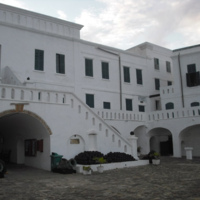
Cape Coast Castle
Cape Coast Castle is one of around forty ‘slave castles’ built by European traders on the coast of West Africa and used to hold enslaved Africans prior to their being transported to the Americas or the Caribbean. The first timber construction on the site was erected in 1653 for the Swedish Africa Company named Carolusborg. It was later rebuilt in stone. In April 1663 the ‘Swedish Gold Coast’ was seized by the Danes and integrated into the ‘Danish Gold Coast’. In 1664 it was conquered by the British. Originally used for trade in timber and gold, the castle was later used in the transatlantic slave trade. In the late 18th century it was rebuilt and used as the seat of the colonial Government of the British Gold Coast in 1844. In 1957, when Ghana became independent, the site came under the care of the Ghana Museums and Monuments Board, and was restored for public access in the 1990s. The museum offers guided tours, as well as permitting tours orchestrated by freelance tour guides. There is also a library and a gift shop, featuring traditional Ghanaian arts and crafts, on site.
The main aim of the museum is to act as a monument to those taken from Africa and enslaved into the system of Transatlantic Slavery. It features both archaeological and ethnographic collections on displays, within the rooms of the castle. Throughout, there are also a number of contemporary sculptures depicting the heads of victims of the slave trade. Visitors tour through the castle, encountering the rooms in which the enslaved were held, with guides providing further information about the conditions and experiences those thousands of Africans faced.
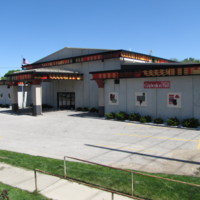
African American Museum of Iowa
The African American Museum of Iowa was founded by a small group of members of the Mt. Zion missionary Baptist church in Cedar Rapids in 1993. The museum was closed for a year during flooding, reopening in 2009. It attempts to preserve, exhibit, and teach the African American heritage of Iowa. The museum aims to examine Iowa’s African American history, from the transatlantic slave trade until Civil Rights. The museum also offers traveling exhibits available for to rent for two weeks at a small cost. It is heavily funded by donations.
The permanent exhibits at the museum are concerned with tracing Iowa’s African American history, from its origins in western Africa to the present, through slavery, the Civil War, the Underground Railroad, segregation and the Civil Rights Movement. There is also a rolling programme of temporary exhibitions on a range of themes including, art and social history. Group tours are offered for adults. These last around 45 minutes and provide additional stories, contexts, and insight into the workings of the museum throughout the tour. For younger people the museum runs field trips and hands-on workshops offering age-appropriate lessons covering local African American history and culture. There is also an online collection which includes archives, photos, library items, and oral histories.
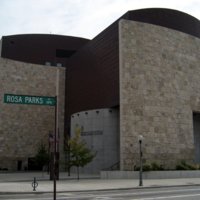
National Underground Railroad Freedom Centre
The National Underground Railroad Freedom Centre opened in August 2004 and has since strived to tell the stories of those who have fought for freedom from the Underground Railway to the present day in the hope of challenging people’s ideas about inclusivity and freedom. The museum also aims to encourage and inspire people to promote and work towards freedom. Its position next to the Ohio River is a poignant reminder of its purpose as this river separated the southern slave states from the free states of the North. The National Underground Freedom Centre examines America’s heritage alongside discussions of contemporary slavery and human trafficking. It also forms part of a group of 'Museums of Conscience' alongside three others across the United States, including the United States Holocaust Memorial Museum. The National Underground Railroad Freedom Centre reveals stories about freedom’s heroes: the men, women and children who challenge inequities to pursue greater freedom for their brothers and sisters. Through a series of rolling ‘special exhibitions’ and its vast collections displayed in several permanent exhibition spaces, the museum highlights the long history of enslavement in America, and its continuing legacy in the modern world.
The centre's most significant artifact is an original slave pen (or prison) originally built in 1830, and thought to be the only surviving example in the world. Visitors can walk through the pen and see some of the names of the people who were once held there. Alongside the pen, which is housed in its own exhibition space on the museum's second floor, there is a permanent exhibition, 'From Slavery to Freedom.' This exhibition covers three hundred years of slavery from its introduction to the Americas to its abolition. 'From Slavery to Freedom' is funded by the Oprah Winfrey Foundation and features a range of collections, including artefacts, archaeological specimens and paintings.
The centre also houses the 'world's first museum-quality, permanent exhibition on the subjects of modern-day slavery and human trafficking'; 'Invisible: Slavery Today' uses the experiences of five individuals who have been caught up in different forms of contemporary slavery and exploitation to highlight the issue in the modern world, as well as including examples of modern antislavery work around the world.
The centre also contains examples of interactive exhibits, with films, hands-on activities and live gallery talks, aimed at providing their visitors with a multi-sensory experience.
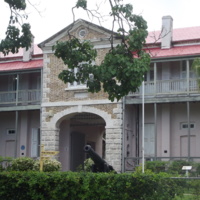
Barbados Museum and Historical Society
The Barbados Museum and Historical Society was founded in 1933. It is a not-for-profit, non-governmental organisation which aims to collect, preserve and interpret Barbadian heritage for its communities. Housed in a former prison, the museum now holds a collection of around half a million objects, dating from prehistory to today, as well as a significant archive.
The museum's permanent galleries explore the history of Barbados and its people through a range of different themes, including social, natural and military history. Colonialism and slavery feature as key themes in several of these galleries. In the Jubilee Gallery, which contains items relating to social history, the exhibition narrative charts four thousand years of Barbadian history. This includes the development of Barbados into a plantation society, life for the enslaved on those plantations and their lives post-emancipation. The Charles A. Robertson African Gallery also reflects on the legacies of slavery with regards to the African diaspora and its heritage within the Caribbean. Here the focus is on the processes of the slave trade, particularly the forced movement of people to the island. Objects in this exhibition reflect different African kingdoms, traditional customs and the diversity of African people.
In addition to its permanent exhibitions the museum also offers a range of learning opportunities relating to the history of slavery in the area. From educational island tours, to school visits and a programme of public events, the museum caters for a wide range of audiences.
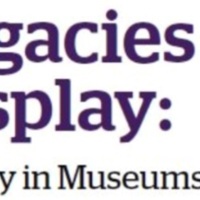
Hanover Museum
The Hanover Museum dates back to the eighteenth century, and is housed in a former slave prison. It was redeveloped in 2011 and now stands as an important symbol of resistance to the people of Jamaica. Situated in the small town of Lucea, between Montego Bay and Negril, the museum sits within a wider landscape of Georgian colonial architecture. Other buildings of historical significance include the nearby church and Fort Charlotte.
The museum houses a varied collection charting the development of the town from the period of plantation slavery to Jamaican independence from British rule. There are paintings, pottery and other artefacts that showcase what life was like for the enslaved. There are also instruments, including stocks, whips and shackles, that highlight the brutal nature of enslavement. In addition, the museum houses a significant collection of archival material, including plantation records and accounts, as well as an early, hand-drawn map of the harbour and surrounding area by Captain William Bligh.
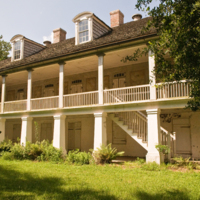
The Whitney Plantation
Widely claimed to be the first museum in America to solely address slavery, the Whitney Plantation is a plantation estate, museum and memorial outside New Orleans, on Louisiana's famed River Road. During the eighteenth and nineteenth centuries, the plantation was home to the Haydel family, and their enslaved workers. The site was bought in 2000 by a retired lawyer, John Cummings, who funded the renovation and redevelopment of the site, which opened to the public as a museum in 2014. On arrival, visitors must join a guided tour to see the majority of the site, but the museum is open to all.
On the property visitors will find a range of exhibits, including the Mansion House, slave quarters, a blacksmith's shop and a Baptist church. There is also a 'Wall of Honour' which features the names of all those enslaved at the plantation, as taken from the site's archives. In addition, there is a sculpture installation created by American artist Woodrow Nash called 'The Children of Whitney,' that seeks to remind visitors that slavery affected children as well as adults.
The site houses a significant collection of artefacts too. These range from plantation tools and house furniture. There is even the largest collection of sugar kettles in the whole of Louisiana. Much of this collection has been purchased at auctions around the USA, in a bid to redisplay the site as it was during the antebellum period. There are three archaeological sites which also contribute collections of material linked to the lives of the enslaved themselves. All of this provides visitors with a unique perspective of plantation life, and helps to break down the ignorance still surrounding histories of American enslavement.
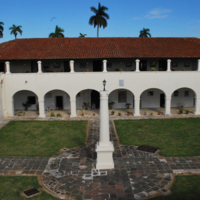
Museo Nacional Ruta del Esclavo
The Museo Nacional Ruta del Esclavo (Slave Route National Museum) is housed in San Severino Castle, in the Matanzas district of Cuba. It opened in 2009, as the product of UNESCO's Slave Route project. Off the beaten tourist track, the museum in the seventeenth-century castle receives few visitors.
The museum itself houses an important exhibition, aimed at showcasing the horrors of the Transatlantic Slave Trade in order to prevent the like ever happening again. The museum has four exhibition rooms with photographs, objects and archaeological items accompanied by interpretive text. These rooms address the origins of slavery, the plantation systems, abolition and emancipation, and the ongoing legacies affecting people of African heritage around the world.
After being selected by UNESCO to house interpretation for the Slave Route project, the museum has supported a number of African cultural groups in the local area, as well as hosting activities for the nearby university. In the exhibition space itself, there are fourteen African sculptures donated by Cuban artist Lorenzo Padilla.
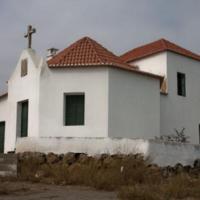
National Museum of Slavery
The Angolan National Museum of Slavery (or Museu Nacional da Escravatura in Portugese) was founded by the National Institute of Cultural Patrimony in 1997. Its main aim is to depict the history of slavery in Angola. The museum is situated in a chapel which once belonged to Álvaro de Carvalho Matoso, one of the largest Portugese slave-traders in the eighteenth century. It is also next door to Capela da Casa Grande, a seventeenth-century structure which was once used for baptising enslaved Africans before they were shipped to the Americas. The museum has a large collection of items that were utilised in the slave trade, as well as items relating to African culture pre- and post- transatlantic slave trade and a vast photography collection. Situated 15.5 miles outside the city of Luanda, the museum forms an extraordinary landmark along the "Slave's Route."
While the museum itself is realtively modest, it's aim is a big one; 'it is a testament and a reminder of the history of the Angolan people who lived in the day of slavery and it stands as a monument to those who suffered and were affected by slavery.' The narrative in the museum focusses predominantly on Portugal, the main European slave trader in the Angola region. It provides a contextual history of the Atlantic Slave Trade, as well as highlighting slavery in Africa before the involvement of Europeans.